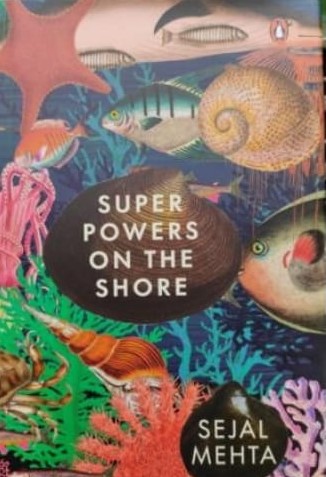Ravindranath G

Publisher: Penguin Random House, India, 2022
Title: Super Powers on the Shore
Author: Sejal Mehta
MRP: 499.00
Pages: 205
Chapters: 13 with 93 references
This book nudges you to take a walk along the seashore, across tide pools and explore the living world therein. Avoiding too much jargon, and yet scientific in approach, Sejal Mehta fetches stories from her deep memory, invests her imagination and creates a fascinating palette of the lives of the denizens of the intertidal zone.
The intertidal zone is a by-the-second changing tough battle zone. Organisms face periodic insolation and flooding; salty waters battering them according to a hexadian (six hour) tidal rhythm. Ample food though makes it worth the risk for all the organisms and hence the intertidal zone is an excellent lab for observing the ‘struggle for existence’.
Sejal Mehta’s assertion that animals in the inter and intra tidal zone have several ‘super powers’ makes the reader sit up and take notice, eager to know what these superpowers are. Camouflage, bioluminescence, unique methods of predation, becoming invisible for defence, reproduction — all these specialized adaptations are ‘superpowers’.
Mehta talks about camouflage and invisibility among cephalopods such as octopi, squids with a lucid explanation of chromatophores and irridophores without making it too technical. This is in fact excellent pedagogy.
An entire chapter is devoted to sex and reproduction among inter tidal animals with all the eccentricities and quirks such as sex reversal, strategies of dispersion and other behaviours with examples of turtles, sea hares, polyclads, anemones. ‘Phoenix’ is a clever and appropriate metaphor she uses for regeneration which can be seen among sea stars, sponges and sea cucumbers.
One cannot write a book on superpowers without referring to predation. There are examples of the venom of conus, scorpion fish, force generated by pistol shrimp to stun its prey and the bobbit worm that ambushes its prey.
Towards the end she asks us to seek inspiration from the tides that are ‘non-judgemental, taking in everything and returning with a clean slate– a cycle of hope and yet impermanence’. Of the coasts, she writes a tad philosophically, “The enveloping softness of sand and the idea of standing on the edge of something so unfathomably limitless is disorienting and deeply satisfying, all at once.”
Interspersed with many poems and ending with ‘letters’ — purportedly from some of these amazing animals; each one of these is a pedagogical method to engage with bored students rather than stuff them with facts. In the end she flips the ‘superpower concept’ and leaves us with a sense of purpose by posing the question, ’Are we not superpowers too? We have it in us to save nature and the intertidal belt in particular?’ For if not us who will?
Each illustration, drawn superbly by Jessica Luis, is a creative story in itself.
Indeed this book is a wonderful introductory course on marine biology.
The reviewer is a teacher of zoology at Royal College of Arts, Science and Commerce, Maharashtra. He can be reached at ravi.zooroyal@gmail.com.
